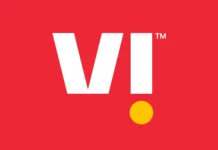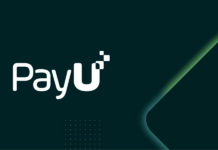If you want to discover what are the trends for educational marketing in 2023, continue reading this post. As you may already know, education marketing trends are evolving rapidly to meet the needs of students and teachers as the creation of new paper help services is based on AI.
Trends for education marketing in 2023
- Personalized marketing: With the amount of information available about students, teachers, and customers, it should be used to create more personalized marketing experiences.
- Use of advanced technology: Technology, such as artificial intelligence and virtual reality, is transforming how students interact.
- Focus on the student experience: The student experience is increasingly important, and education providers must ensure that their strategies reflect this. This includes building a strong and consistent brand and improving the quality of teaching and online learning experiences.
- Emphasis on data-driven marketing: Data plays a larger role in education marketing, with providers using data analytics to better understand their target audience and tailor their marketing efforts accordingly.
- Importance of digital marketing: With more and more students turning to online learning, digital marketing has become even more important. This includes developing a strong web presence, using social media effectively, and creating engaging digital content.
Overall, these trends indicate the need for schools to stay ahead of the curve in marketing activities and remain relevant in a rapidly changing landscape.
Developing SEO and Inbound Marketing strategies for educational institutions
After seeing these trends, a strategy aligned with these trends must be established. Therefore, SEO (Search Engine Optimization) and Inbound Marketing are essential for educational centers looking to reach new students and build their online reputation. In this article, we will explore the development of these strategies for institutions such as colleges, schools, and universities and how they can be used effectively:
- Keyword Research: One of the most important steps in developing an SEO strategy is keyword research. This involves identifying potential students’ keywords when searching for educational programs and services. By including these keywords in website content, educational institutions can increase their visibility in search engines and drive more relevant traffic to their site.
- Content creation: Inbound marketing relies heavily on creating high-quality, informative content. Educational institutions should aim to create relevant, valuable, and engaging content for their target audience. Blog entries, infographics, videos, and other material are examples of this. Education centers can build trust by creating content geared towards potential students and establishing their brand as a ‘thought leader’ in their industry.
- Blogs: Blogs are a powerful tool for education centers looking to attract more traffic and generate leads. By publishing regular blog posts that address student needs and challenges, schools can establish themselves as an authority in their field and attract more website visitors.
- Social media: Social media platforms such as Facebook, Twitter, and LinkedIn are excellent tools for reaching new students and building your brand. Creating a strong social media presence and engaging with students can build relationships and drive traffic to your website.
- Landing pages: Landing pages are specialized pages on a website designed to convert visitors into leads. Educational institutions can use landing pages to highlight specific programs or services, provide more information, and encourage visitors to take specific action, such as filling out a form or subscribing to a newsletter.
In conclusion, SEO and inbound marketing are critical to the success of schools looking to reach new students. By using these strategies, schools can interact with their target audience, increase their visibility on search engines and generate more leads.
Personalization: a key element for long-lasting relationships with learners
Personalization has become a key element in building lasting relationships with students in the education industry. But why is personalization important, and how can it be effectively implemented in schools? Here are some keys to answering this question:
- A better understanding of student needs: You will better understand their needs and preferences by personalizing communications and interactions with students. This information can be used to create a more personalized and effective educational experience that meets the specific needs of each student.
- Increased engagement and loyalty: Personalization can increase student engagement and loyalty. When students feel that their needs and preferences are taken into account, they are more likely to remain engaged with your value proposition.
- Improving the learner experience: Personalization can also improve the learner experience. You create a more engaging, supportive, and effective learning environment by tailoring the experience to each learner’s needs and preferences.
- Personalized learning plans: Using the information collected, personalized learning plans can be created for each learner. This can include tailored courses, personalized feedback, and real-time support. In addition, this methodology can lead to better academic results and a better overall learning experience.
In conclusion, personalization is key to building lasting relationships with students in the education industry. This, in turn, can lead to greater engagement and loyalty and better academic outcomes for students.







